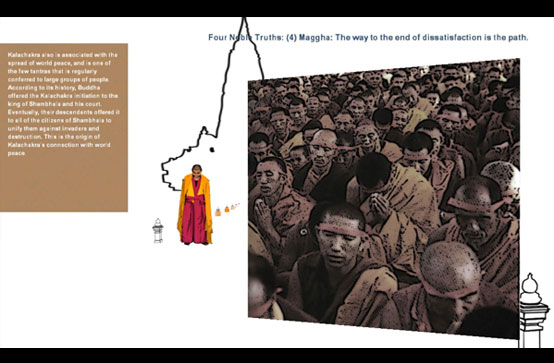|
 |
|
Introduction
Design Document Excerpt
A strength of virtual environments allows designer/developers to make simulations that creatively portray the abstract (or even invisible, as in the case of molecules and chemical compounds), making the subject matter more appealing for its learners.
This possibility for both abstract and concrete representation within virtual environments is particularly germane when dealing with the teachings in the areas of Religion and Cultural Studies, since the higher concepts of a religious belief may be portrayed symbolically. Additionally, depictions of actual locations and artifacts of historical relevance may be incorporated into the world, so that a combination of real world references appear as a contextually relevant backdrop for the presentation of esoteric religious concepts.
In the “Wheel of Time” virtual environment, the before-mentioned aspects have been integrated into virtual worlds that juxtapose impressionistic depictions of real environments next to information that clarifies an abstract Buddhist ritual by adding visual, textural, textual, and auditory sensory information, all of which introduces new material by addressing different arenas of the user’s attention. The subject matter is presented in a way that introduces factual information to the user as s/he explores the space, while allowing for the possibility of a meditative experience for those who subscribe to the Buddhist ideology.
|
|